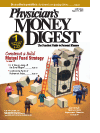Publication
Article
Physician's Money Digest
Analyze These Medical Museum Highlights
Author(s):
You don't have to practice medicinevery long before you've seen andheard some fairly strange cases. So itshouldn't be surprising for physicians tolearn that the National Museum ofHealth and Medicine has a seeminglyunending supply of the bizarre withwhich to fill its halls.
Located in Washington, DC, themuseum has collected the medically significant—and macabre—since 1862. Itwas established during the Civil Waras the Army Medical Museum whenSurgeon General William Hammonddirected medical officers in the field tocollect "specimens of morbid anatomytogether with projectiles and foreignbodies removed."
WILD AND WACKY STUFF
From this first initiative grew anexhaustive collection of objects thatnumber over 24 million today, and areused to educate and astound physiciansand the public alike. Among the museumexhibitions are:
• A stomach-shaped hairball, ortrichobezoar, which was successfullyremoved from a 12-year-old girl whosuffered from trichophagia, an emotionaldisorder that causes one to eattheir own hair. It's 1 of 3 specimens inthe museum's collection.
• The bullet that took AbrahamLincoln's life, the probe used to locatethe bullet, the blood-stained cuffs fromthe museum surgeon who attended theautopsy, and fragments of Lincoln'sskull and hair.
• Many skulls and skeletons, includinga 6-toed foot, which was a result ofthe rarely occurring hereditary condition,polydactyly.
• The world's most comprehensivecollection of microscopes, dating back tothe early 1600s.
• A display of kidney stones.
• A brain still attached to a spinalcord suspended in formaldehyde.
• And, of course, live leeches.
SOCIAL COMMENTARY
But the focus is not just on medicaloddities. "There are artifacts on displaythat physicians may not have seen in ourcontext and that can be interesting,"comments Steven Solomon, public affairsofficer. On a historical level, there areexhibits highlighting the state of medicineduring the Civil and Korean wars, avaried collection of historic medicalinstruments, and much more to observe.
Current and past exhibits have focusedon the more emotionalaspects of medicine. A recentexhibit organized by theAmerican Academy of OrthopaedicSurgeons featured 165pieces of art submitted byorthopedic surgeons and theirpatients. "Artwork by patientsreflects their orthopedic pain,frustration, recovery, and hope.Works by orthopedic surgeonsillustrate the patient/physician partnership,anatomical knowledge, compassion,art of healing, and the way the surgeonsfeel they're making a difference inpeople's lives," said Dr. Adrianne Noe,the museum's director.
RESPONSE TO SEPTEMBER 11
A current exhibit, Research Matters:9/11, The Armed Forces Institute ofPathology Responds, highlights effortsused by the museum's parent organization,the Armed Forces Institute ofPathology (AFIP), to identify the victimsof the September 11 terrorist attacks atthe Pentagon and the crash of UnitedAirlines Flight 93 in Somerset County, Pa.On permanent display, it features photographsnever before seen by the publicthat were taken by AFIP staff, as well asrecent essays from medical professionalswho were called on to rescueand identify victims.
"The experiences of mycolleagues in the aftermathof the terrorist attacks havebecome part of our collectivenational memory, andhave been documented bythe museum for lastingvalue to the world," Noesays. "Visitors can learnthrough the Research Matters exhibitabout the personal experiences of US militarymedical personnel during uniquechallenges to our nation."
Solomon says of the museum, "A fairamount of doctors bring family andfriends and act as a sort of tour guide,to show them their world." Whileyounger family members may findsome of the displays to be a bit intense,they're sure to observe a giant hairballas pretty, uh, cool.
The National Museum of Health andMedicine is located at 6900 GeorgiaAve NW, Washington, DC. It's openfrom 10 AM to 5:30 PM daily (closedDecember 25). For more information,call 202-782-2200 or visit www.natmedmuse.afip.org/index.html.
